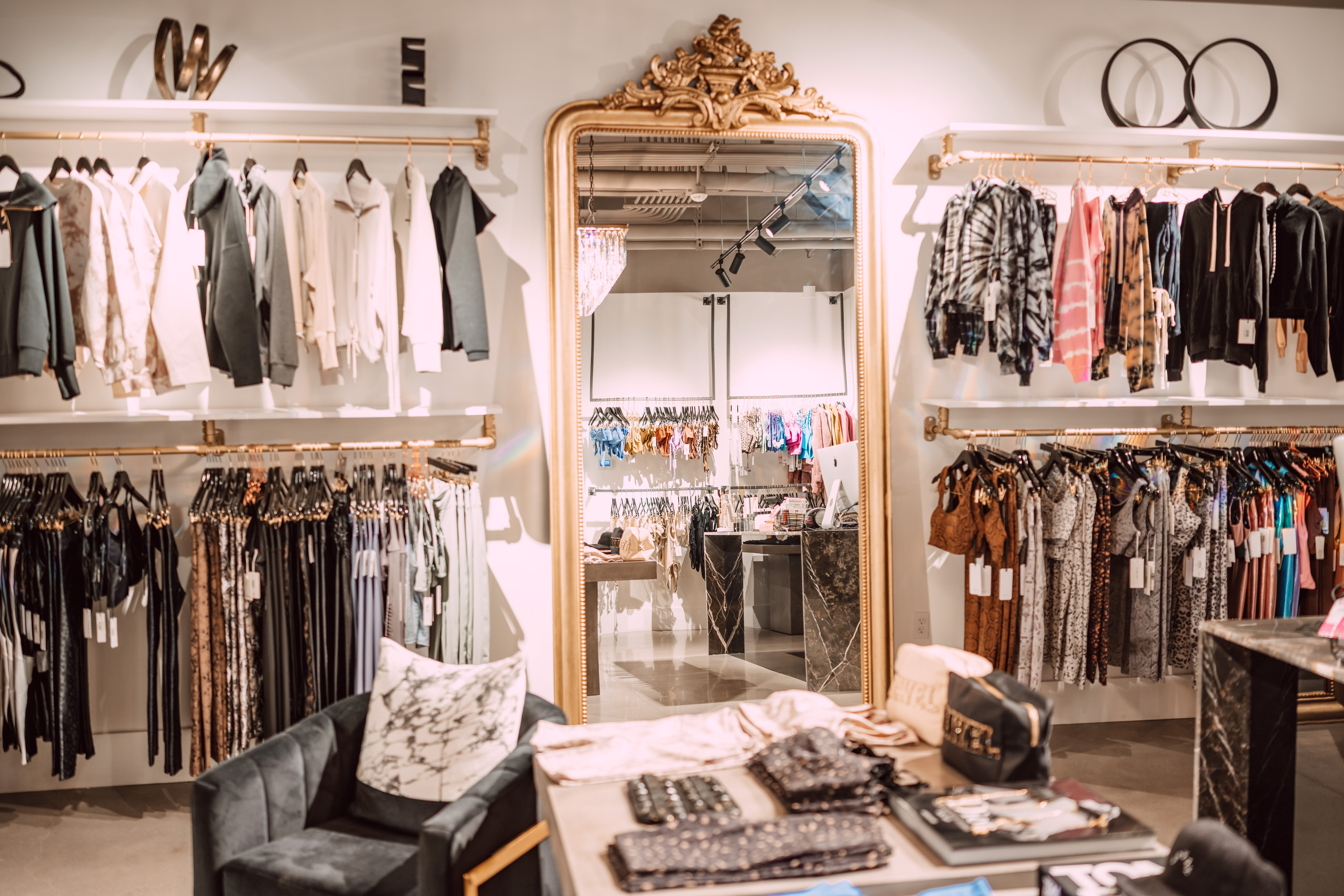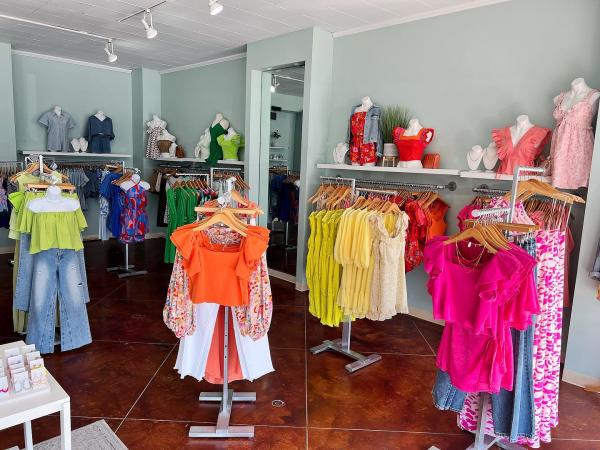Unveiling the Secrets Behind Cost Effective Boutique Fashion
Sustainable Fashion: Just How Eco-Friendly Apparel Is Shaping the Future of Style
As the apparel industry encounters increasing scrutiny over its environmental effect, the surge of lasting style offers an appealing option that straightens design with eco-friendly responsibility. Employing innovative materials such as plant-based materials and recycled fibers, together with sophisticated approaches like electronic and 3D printing, developers are redefining what it suggests to be classy in the modern-day age. Simultaneously, the expanding appeal of upcycling and second hand society is cultivating a change towards a circular economic climate. Yet, just how does this motion genuinely affect the future trajectory of fashion, and what difficulties lie ahead in its prevalent fostering?
Cutting-edge Sustainable Materials
As the fashion sector grapples with its environmental effect, cutting-edge sustainable products have actually emerged as an important solution for minimizing eco-friendly footprints. These materials not just reduce dependency on fossil fuels yet also reduce unsafe pesticide usage and water usage.
Along with plant-based products, innovations in biofabrication have actually led to the development of lab-grown textiles. Mycelium leather, derived from mushroom roots, provides a flexible and naturally degradable option to pet leather. Its production causes substantially reduced carbon exhausts and water use, making it an extra lasting alternative for style developers looking for to straighten with environmentally friendly methods.
Recycled materials are also acquiring traction, with polyester made from recycled plastic bottles standing for a substantial innovation. This technology not just diverts plastic waste from landfills and oceans however likewise reduces power intake contrasted to producing virgin polyester. Together, these products highlight the potential for a much more lasting fashion business, leading the way for eco mindful design and manufacturing.
Eco-Conscious Manufacturing
Building on the technologies in lasting materials, the fashion business is likewise re-evaluating its production procedures to even more lower ecological impact. Trick methods include decreasing water usage, reducing carbon exhausts, and eliminating unsafe chemicals. By embracing closed-loop systems, manufacturers intend to recycle water and power efficiently, dramatically reducing waste. The integration of renewable resource sources, such as solar and wind power, right into production centers even more reduces dependence on nonrenewable fuel sources.
An additional crucial element is the decrease of toxic chemicals typically made use of in coloring and finishing textiles. Eco-conscious makers are changing in the direction of plant-based dyes and waterless dyeing technologies, which not only secure neighborhood communities however additionally improve worker security. Technologies like electronic printing reduce fabric waste and energy usage, using a cleaner choice to traditional methods.
With the advancement of blockchain innovation, business can now provide comprehensive understandings into their supply chains, ensuring honest and environmentally pleasant practices at each action. As the demand for eco-conscious products expands, makers are forced to introduce, guaranteeing that the future of fashion is both stylish and lasting.
The Surge of Upcycling
Upcycling, a transformative method in sustainable fashion, involves artistically repurposing disposed of products right into brand-new, This Site top quality items. This innovative method not just decreases waste however likewise reduces the need for basic materials, therefore minimizing the ecological influence of clothing production. By rebuilding and reimagining existing products, designers and style brands are able to infuse creativity into their collections while promoting ecological duty.

Furthermore, the upcycling motion has actually encouraged small companies and independent designers, who typically lead in development because of their dexterity and imagination. By profiting from the bountiful availability of extra products, these entities add to a round economic climate, showing that style can be both sustainable and elegant. Via upcycling, the market takes significant strides in the direction of a much more accountable and aware future.
Thrift Culture's Influence
The growing second hand culture significantly improves the landscape of sustainable style, emphasizing the value of mindful usage. This cultural shift urges consumers to welcome website link used apparel, thus lowering the demand for brand-new garment production and decreasing ecological influence. Second hand buying not only extends the lifecycle of click reference clothing yet additionally decreases the carbon impact related to production, carrying, and throwing away apparel.
An essential facet of thrift culture is its democratization of style. By offering a broad variety of designs from various periods at budget friendly prices, thrift shops make style available to a wider target market. This access fosters a sense of uniqueness and creative thinking, as customers mix and suit unique pieces to curate individualized closets without adding to the rapid fashion cycle.
Additionally, second hand society advertises circularity in style, straightening with the principles of a circular economy. By recirculating garments, the cycle of waste is disrupted, and resources are conserved. This practice supports a shift from a linear "take-make-dispose" model to a more sustainable framework. As even more customers and developers accept thrift culture, the apparel industry is compelled to adjust, incorporating lasting techniques to satisfy the growing demand for eco-conscious alternatives.

Future Trends in Fashion
Fashion's development is significantly shaped by technological technologies and sustainability-driven initiatives. One popular pattern is the surge of digital fashion, where online garments can be used in increased reality environments, substantially lowering fabric waste.
Furthermore, the combination of blockchain modern technology supplies new possibilities in transparency and traceability, enabling consumers to confirm the sustainability qualifications of their apparel. boutique fashion. This ensures accountability in supply chains and promotes ethical sourcing methods. 3D printing is yet one more advancement that guarantees to change making procedures by making it possible for on-demand manufacturing, therefore decreasing excess inventory and waste
As these modern technologies develop, they are poised to change the style landscape, merging style with sustainability. The future of style, as a result, lies in a smooth mix of technology, innovation, and eco-friendly obligation.
Conclusion
The change of the style industry with lasting practices suggests a crucial shift in the direction of ecological accountability. This advancement not just aligns style with eco-friendly sustainability yet additionally sets a precedent for future patterns concentrated on responsibility and advancement.
As the style industry deals with raising scrutiny over its environmental effect, the surge of lasting fashion provides an appealing choice that straightens style with ecological obligation.As the style sector grapples with its ecological influence, innovative sustainable materials have emerged as a critical solution for decreasing environmental impacts. With each other, these products emphasize the possibility for an extra lasting style sector, leading the means for eco aware layout and manufacturing.
Structure on the technologies in lasting products, the style sector is likewise re-evaluating its manufacturing processes to even more decrease environmental impact. boutique fashion.Upcycling, a transformative practice in sustainable style, entails artistically repurposing thrown out products into new, top quality products